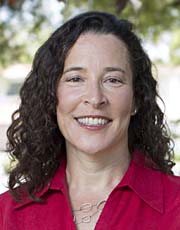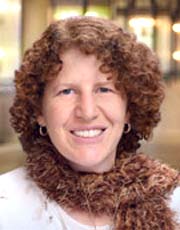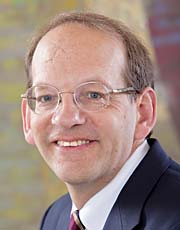Spring 2014 SoCal-Nev Section Meeting
Concordia University, Irvine, California
Saturday, April 12, 2014
(Directions and Map)
Tentative Schedule
- 8:00-12:00 Registration
Grimm Hall Breezeway - 8:00-10:30 Refreshments
Grimm Hall Breezeway - 8:30-2:30 MAA Book Sale
Grimm Hall South Room 121
Organized by Richard Katz and Michael Hoffman, Cal State Los Angeles - 8:30-8:40 Welcome!
Grimm Hall South Denault Auditorium - 8:40-9:40 Invited Address by Hal Stern, UC Irvine
Watching Sports Through the Eyes of a Statistician
Grimm Hall South Denault Auditorium - 9:45-10:00 Section Business Meeting
Grimm Hall South Denault Auditorium
Presentation of Section Distinguished Teaching Award
Vote on changes to Section Bylaws - 10:00-10:15 Morning Break
Grimm Hall Breezeway - 10:15-11:15 Student Poster Session
View the Call for Posters and apply on-line.
Grimm Hall Patio
Organized by Ioana Mihaila, Cal Poly Pomona - 11:15-12:15 Invited Address by Rachel Levy, Harvey Mudd College
A Mathematician Meets the Media
Grimm Hall South Denault Auditorium - 12:15-1:30 Lunch
Pick up pre-ordered box lunches in Grimm Hall Breezeway. - 1:30-2:30 Invited Address by Perla Myers, University of San Diego
Smile... It’s Mathematics! Deepening the Mathematical Understanding of Future Teachers
Grimm Hall South Denault Auditorium - 2:30-2:45 Presentation of Student Poster Session prizes and certificates
Grimm Hall South Denault Auditorium - 2:45-3:00 Afternoon Break
Grimm Hall Breezeway - 3:00-4:00 Invited Address by Jamie Pommersheim, Reed College
Dissecting a Square into Triangles
Grimm Hall South Denault Auditorium
Directions and Maps
The meeting will take place in Grimm Hall, Concordia University, Irvine. Here is the Campus map. Grimm Hall South is located on the left (west) side of the map and is labeled 7.
Directions From the 405 Freeway (North or South), exit at Culver Drive. Go south on Culver Drive to Campus Drive. Turn east (left) on Campus Drive, then left on Turtle Rock Drive. Turn left onto Concordia West to enter campus at Gate House 1. Follow Concordia West up the hill to the Main Parking Lot.
Parking is free. The meeting registration is at Grimm Hall, which is adjacent to the Main Parking Lot. If the Main Parking Lot is full, continue on Concordia West (in the same direction) a short distance to the large parking lot on the left in the upper right quadrant of the map.
Hotel
For attendees who wish to arrive the day before or leave the day after the meeting, consult the list of hotels on Concordia University's website.
Registration Fees
Concordia will be hosting several other events on Sat., April 12, so on-campus food service will be very limited and may not be available to our group at all. We highly recommend that meeting participants pack a picnic or purchase a box lunch in pre-registration.
| Pre-Registration | |
| Nonmember | $45 |
| MAA Member | $40 |
| Student | $15 |
| Student poster presenter (2 free registrations per poster) | $0 |
| Box Lunch Sandwich selection: Each box lunch includes chips, a dessert and a beverage. |
|
| Nonmember | add $9 |
| MAA Member | add $9 |
| Student | add $9 |
| Student poster presenter (two free lunches per poster) | $0 |
On-site registration will be available for the meeting, but will be $5 more than the pre-registration charge.
Register by mail
Click here to register by mail, and pay by check (deadline Monday, April 7th).
Rachel LevyHarvey Mudd College |
Rachel Levy is an Associate Professor of Mathematics at Harvey Mudd College. She is currently the editor-in-chief of SIAM Undergraduate Research Online and founder of the blog Grandma got STEM. She serves on the editorial board of Math Horizons and on the SIAM Education Committee. Rachel is especially passionate about all kinds of communication. In addition to teaching first-year writing, she integrates writing and public speaking assignments into her courses on differential equations and fluid dynamics. Her research focuses on fluid motion using both experimental and mathematical approaches. She also works with elementary school teachers on their mathematical practice and pedagogy. She was honored to receive a 2013 Henry L. Alder award from the Mathematical Association of America for Distinguished Teaching by a Beginning College or University Mathematics Faculty Member. |
A Mathematician Meets the Media
If you wanted to communicate an idea to people around the world – and change perspectives – could you do it? I’ll tell you what I learned when my Grandma got STEM project unexpectedly blossomed. Then I’ll share some tips for communicating about your research and other subjects to a wide audience.
Perla MyersUniversity of San Diego |
Perla Myers is Associate Dean of Faculty of the College of Arts and Sciences and Professor of Mathematics at the University of San Diego (USD), where she has been on the faculty since 1999. She earned the B.S. in Mathematics from the University of Houston in 1990, and the M.A and Ph.D. in Mathematics from the University of California, San Diego, in 1991 and 1995, respectively. Although her dissertation was on graph theory and number theory, she has focused more recently on the mathematical education of teachers. Perla co-organized (with Magnhild Lien) two Preparing Mathematicians to Educate Teachers (PMET) national workshops and was co-PI on a California Mathematics and Science Partnership Grant for an “Inquiry Learning Partnership” between USD, the Reuben H. Fleet Science Center (a local science museum), and the Lemon Grove and Chula Vista School Districts. Perla believes in the importance of creating opportunities for future teachers to enhance their mathematical understanding through experiences working with children. In collaboration with her students and colleagues, Perla enjoys organizing Mathematics Events at USD and at local elementary schools, including summer camps, mathematics walks, and Family Math Nights, where USD students work with elementary school children and their parents on mathematics activities. Her latest project is a pilot program called “Mathigami,” a collaboration of USD students, alumni, the YMCA, a local elementary school and children to enrich mathematical understanding and appreciation through origami explorations. Perla is co-PI of an NSF grant to enhance the diversity of USD faculty through recruitment, advancement and retention of women in mathematics, science, engineering and the behavioral sciences, and is active with the Society for the Advancement of Chicanos and Native Americans in Science (SACNAS). At USD, she received the Women of Impact and Innovations in Experiential Education awards and directed the Mathematics Center. She is our MAA Southern California-Nevada Section Governor and the winner of our Section's 2013 Award for Distinguished College or University Teaching of Mathematics. |
Smile... It’s Mathematics! Deepening the Mathematical Understanding of Future Teachers
How do people react when they hear the word “mathematics”? Imagine if they smiled! I will describe some positive experiential education opportunities for future teachers to deepen their mathematical understanding.
Jamie PommersheimReed College |
James (Jamie) Pommersheim is the Katharine Piggott Professor of Mathematics at Reed College in Portland, Oregon. After earning his Ph.D. from the University of Chicago under William Fulton, he held post-doctoral positions at the Institute for Advanced Study, MIT, and UC Berkeley, and taught at New Mexico State University and Pomona College. He has published research papers in a wide variety of areas, including algebraic geometry, number theory, topology, and quantum computation. He has enjoyed teaching number theory to students at many levels: college math and math education students, talented high school students, and advanced graduate students, and is co-author, with Erica Flapan and Tim Marks, of Number Theory: A Lively Introduction with Proofs, Applications, and Stories (Wiley, 2010). He also starred with our MAA Section Chair, Mike Krebs, in the video, "The Definition of the Limit," available at the National Curve Bank website and on YouTube. |
Dissecting a Square into Triangles
You can do this in many ways. You can even make it so that all the triangles have exactly the same area. However, an old theorem of Paul Monsky asserts that it is impossible to cut a square into an odd number of triangles of equal area. The proof of this theorem is a delightful blend of geometry, combinatorics, and number theory. Thus if we cut a square into triangles, there is some nontrivial restriction on what the areas of the triangles can be. In particular, if the combinatorics of the triangulation is fixed, there is a polynomial equation that must be satisfied by the areas of the triangles. We will examine this somewhat mysterious polynomial and discuss some results about its degree.
Hal SternDepartment of StatisticsUC Irvine  |
Hal Stern is Ted and Janice Smith Family Foundation Dean and Professor of Statistics in the Donald Bren School of Information and Computer Sciences at UC Irvine. After receiving the B.S. in Mathematics from MIT in 1981 and working as a research associate for Commodities Corporation for two years, he earned the M.S. and Ph.D. in Statistics from Stanford University in 1985 and 1987, respectively. He held faculty positions at Harvard and Iowa State before becoming Professor and Founding Chair of the Department of Statistics at UC Irvine in 2002. Although he is a biostatistician who has published mainly on Bayesian methods and on medical applications of statistics, he has written and spoken widely on applications of statistics to sports, especially football and baseball. The second edition of his co-authored text, Bayesian Data Analysis, was published in 2003 by Chapman and Hall. He also co-edited and contributed to Statistics: A Guide to the Unknown (4th edition, 2006), and for two years wrote the column "A Statistician Reads the Sports Pages" for CHANCE, a magazine about statistics and its use in society aimed at students and others interested in data analysis. |
Watching Sports Through the Eyes of a Statistician
The field of statistics contributes to virtually all of the sciences and to important policy issues. For many though statistics are most visible in the sports arena -- the business pages of the local newspaper have more numbers than the sports pages but those on the sports page seem to capture a disproportionate share of the attention and invite endless debate. The field of statistics is about more than just lists of numbers. Here we consider the various ways that data are used and abused in the world of sports. Topics include the use of small samples in baseball decision making, difficulties in rating college football teams, and assessing the significanceof sports comebacks.
Student Poster Session
Both undergraduate and graduate students are invited to present a poster at the Spring Section Meeting of the MAA.
Here are some ideas of what students can present:
- Results of masters thesis, honors, senior, or independent study projects
- Results of classroom projects or modeling contests
- Results of REUs or other summer research programs
- Historical investigations in pure or applied mathematics
- Solutions of problems from the Putnam Exam or from the Monthly or other journals
